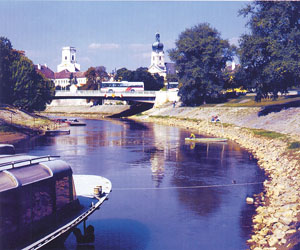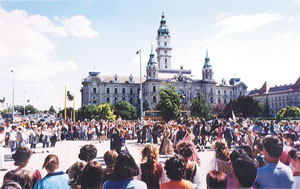Popular destinations nearby
Győr,
Sopron,
Bük,
Fertőd,
Kőszeg,
Mosonmagyaróvár,
Pannonhalma,
Szombathely,
Zalaegerszeg,
Celldömölk,
Dunasziget,
Fertőrákos,
Kapuvár,
Nagykanizsa,
Sárvár
|
Town of county rank with nearly 130,000 inhabitants. It is connected to Slovakia in the north, to Austria in the west, to Lake Balaton to the south and to Budapest to the east with its routes. Because of its central location it had a strategic role even in the Roman times. It used to have the right of organizing fairs and staple right. It had gradually become the centre of the trade towards the West. In the Turkish times it had a significant role as the border castle of Christianity to protect Europe. It is one of the richest towns in Hungary concerning listed monuments. As an acknowledgement of the reconstruction of the baroque town centre it received the Europe award for the protection of listed monuments. The old historic churches, palaces, museums, typical balconies, narrow streets invite the visitors for a walk in the town centre. The Cathedral of Győr preserves a masterpiece of our goldsmith's art, St. Ladislaus herm (a bust shaped reliquary made of precious metal) and the marble sarcophagus of the martyr bishop Vilmos Apor blessed in 1997. Outstanding monuments include the Bishop's Castle, the Carmelite and the St. Ignatius churches, the Zichy palace, Ott-house, Maria column, Arc of the Covenant statue. The one-time hospital called Magyar Ispota represents hidden late-Renaissance architectural values, which has 2 courtyards with the Tuscan order and decorated with an ornamental well by Miklós Borsos. The most valuable sights of the town can be seen along the route of Bécsi kapu square, in the old town of Győr. The townscape is dominated by the eclectic building of the Town Hall (1896-1898) with its 58 m high tower. Győr is a town of festivals, there are festival events from spring to autumn. The performances of Győr Ballet Company, the Győr National Theatre and the Győr Philharmonic Orchestra give unforgettable experiences every time. Lodgings in Győr: More lodgings in Győr Sights in Győr: More sights in Győr Pictures of Győr
|
Győr map nagyítása >>
|
|
|
Hungary - Győr |
|
|
|
||
|
Sunday, 6. July 2025. - 01:25:46 |
||

